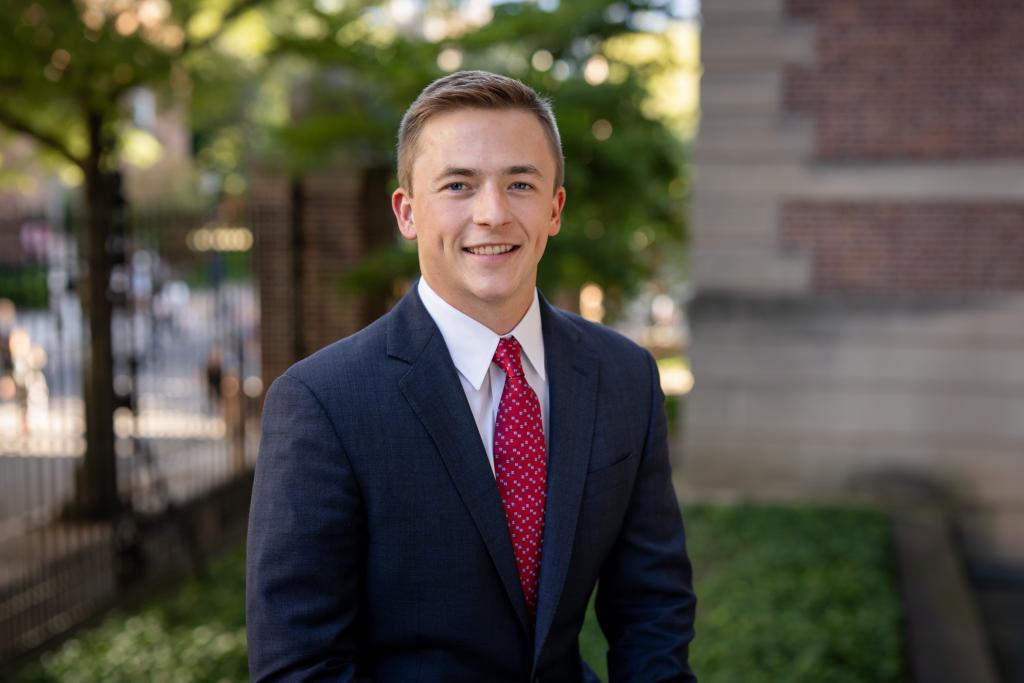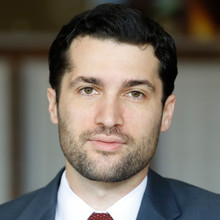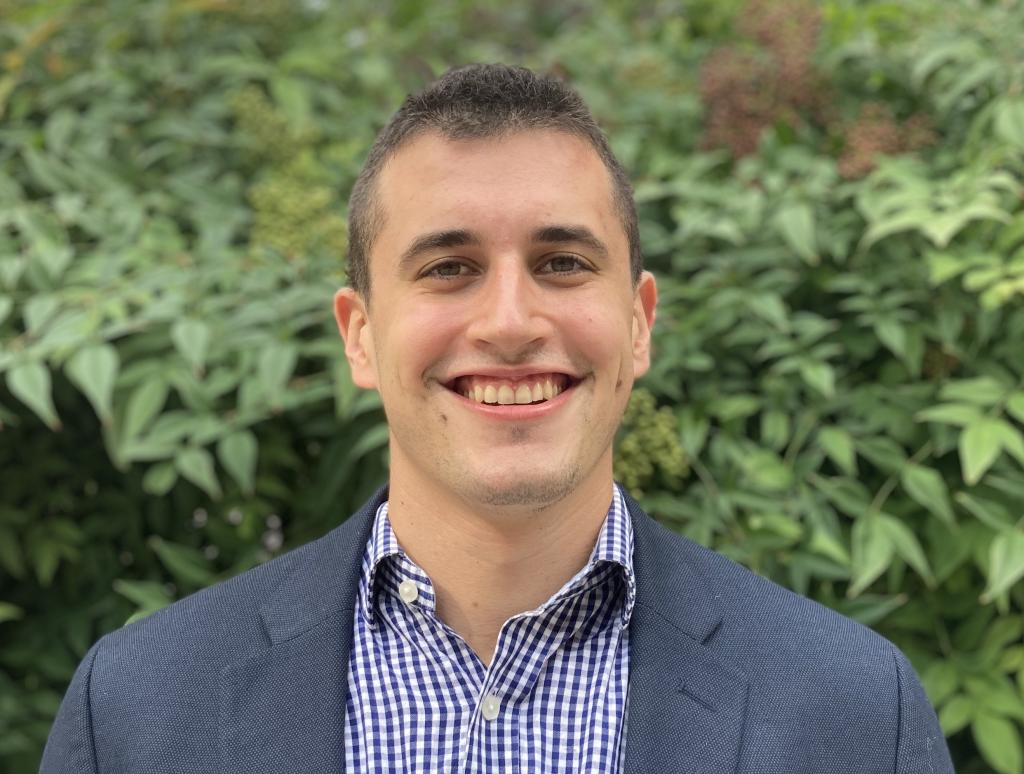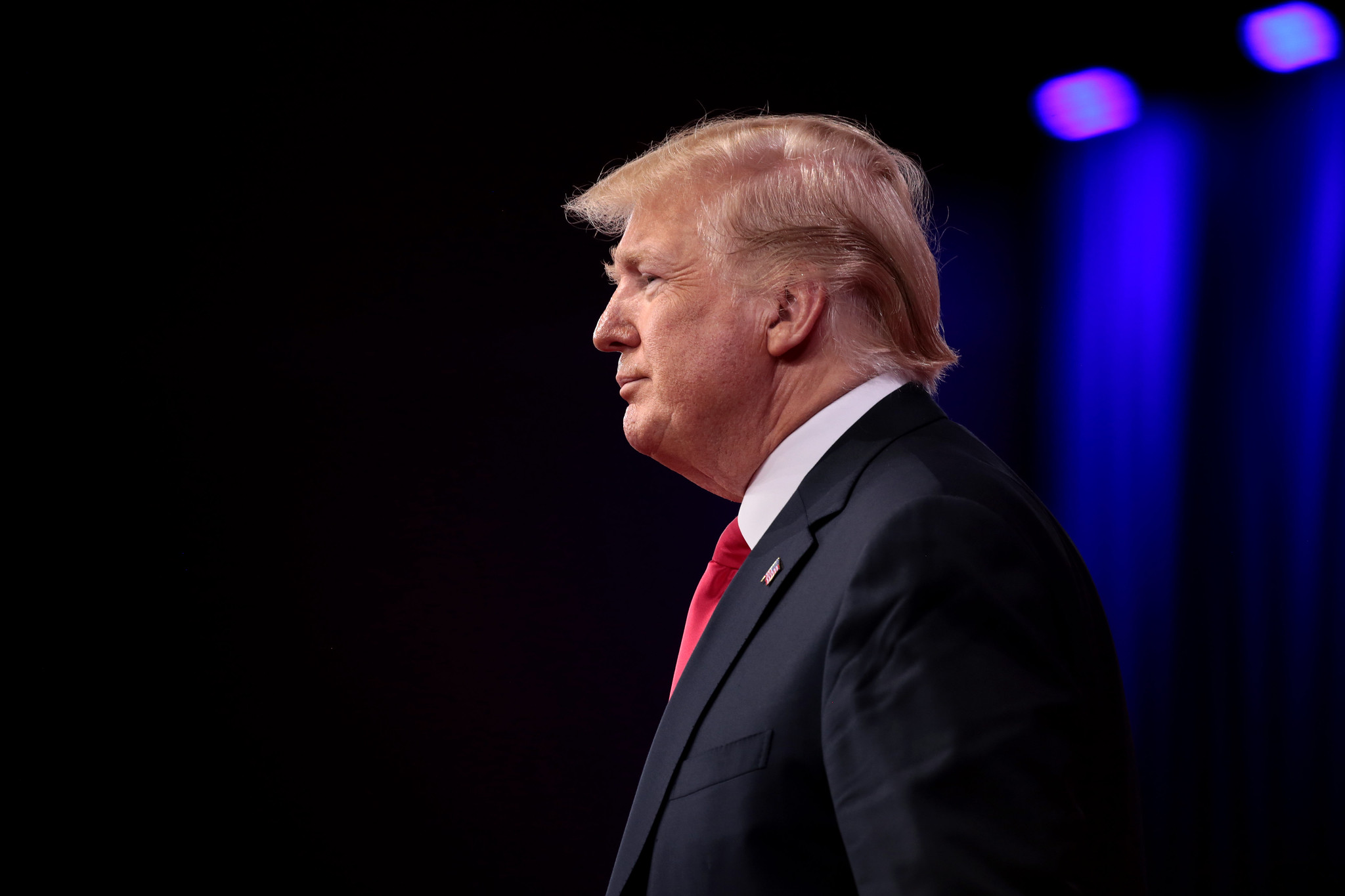Here’s How the Capitol Mob Violated Federal Criminal Law
By storming the Capitol and disrupting the electoral-count certification, yesterday’s mob likely violated many federal criminal laws, including against seditious conspiracy.
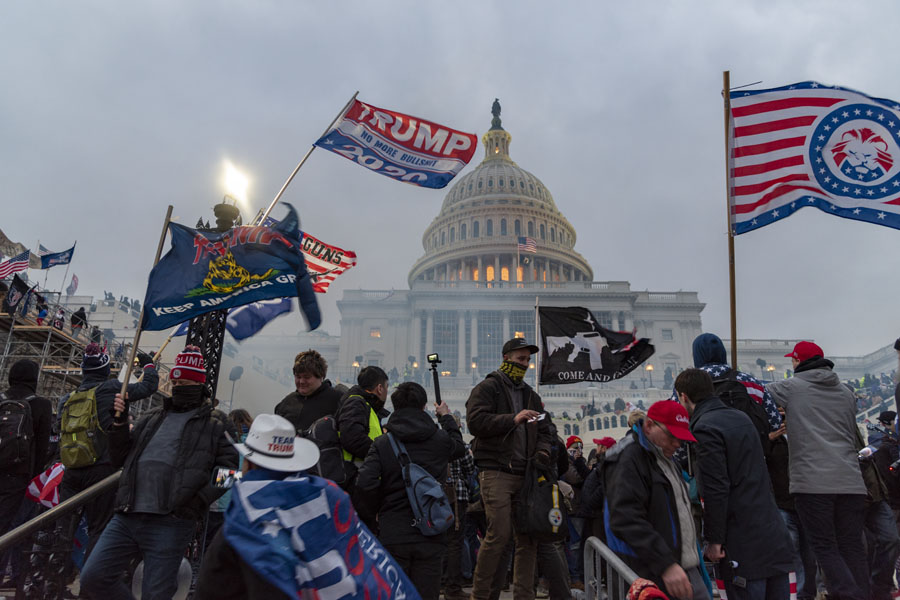
Published by The Lawfare Institute
in Cooperation With

Yesterday’s violent storming of the Capitol building raises questions about President Trump’s fitness to see out the remaining two weeks of his term; about whether large parts of the Republican Party remain committed to even basic norms of democratic government; and about how the country should move on from this brazen attack on the peaceful transition of power.
But it also raises a host of criminal law enforcement issues. Hundreds of people participated in what Senate Majority Leader Mitch McConnell condemned as a “failed insurrection[.]” And, as Bobby Chesney described on the National Security Law Podcast, the events included a “cartoonish avalanche of crimes.” For reasons that remain unclear, relatively few people were actually arrested yesterday, but the FBI has begun trying to figure out the identities of those who stormed the Capitol. And a growing number of U.S. attorneys have written on Twitter that “Federal crimes were violated today at our Nation’s Capitol building,” and that rioters who traveled to D.C. would be prosecuted by U.S. attorneys in their home districts.
The extensive video evidence and crowds of people involved in yesterday’s mayhem give rise to a plethora of potential criminal charges against a large number of criminal suspects. Here, we spell out some of the potential federal criminal statutes that could apply to yesterday’s conduct. It's not intended to be an all-encompassing list and will likely grow as more reporting emerges about what exactly happened on Capitol Hill. Nor do we directly address President Trump’s potential legal exposure, a subject that raises complicated questions of presidential liability to criminal prosecution.
Criminal law is highly fact-specific, and there are still many unanswered questions about what precisely occurred yesterday in any given incident and who had what level of involvement in planning or executing the acts that made up the mob violence. But here is a rough list of plausible factual predicates for any follow-on prosecution under federal law:
- Hundreds of individuals, some armed, forcibly intruded into the Capitol in order to stop the certification of Electoral College votes. They managed to achieve this goal at least temporarily. The counting of electoral votes in both chambers, in fact, stopped from around 2:15 p.m. until about 8 p.m., when law enforcement retook control of the facility.
- The intrusion resulted in violence threatened or committed against Capitol security, against members of Congress and the Senate, and against congressional staff. One of the rioters was shot and subsequently died. Capitol Police described the incident: “As protestors were forcing their way toward the House Chamber ... a sworn USCP employee discharged their service weapon” and shot the woman. Three other people died as a result of “separate medical emergencies.”
- The rioters stole and vandalized government property.
Federal criminal law is, to put it mildly, expansive on the subjects relevant to such conduct. There’s a whole collection of more narrowly applicable statutes that some participants in the mob appear to have violated. There are reports, for example, of rioters perusing Pelosi’s emails—which, if true, could likely constitute a violation of the Computer Fraud and Abuse Act’s prohibition against “knowingly access[ing] a computer without authorization.” As more becomes public about what happened, there will likely be other examples of these more idiosyncratic violations. For now, we’re going to focus on more broadly applicable statutes.
For purposes of federal criminal law, it is useful to group the potential offenses into three categories, starting with the most straightforward and progressing to the most serious, legally consequential and difficult to prove. First, there are property offenses. Second, there are offenses related to disorder. And third, there are anti-government offenses, most notably seditious conspiracy.
If nothing else, the mob clearly violated laws against trespassing on federal facilities and destroying and stealing federal property. Federal law prohibits “depredation against any property of the United States” as well as robbing or attempting to rob “another of any kind or description of personal property belonging to the United States.” It also prohibits possessing a firearm in a federal facility “with intent that a firearm or other dangerous weapon be used in the commission of a crime.”
Another federal statute makes it a crime to “knowingly enter[] or remain[] in any restricted building or grounds without lawful authority to do so” including “with intent to impede or disrupt the orderly conduct of Government business or official functions.” That section also includes offenses in which one “obstructs or impedes ingress or egress from any restricted building or grounds” and “knowingly engages in any act of physical violence against any person or property in any restricted buildings or grounds.” The statute’s definition of “restricted buildings or grounds” includes places “where the President or other person protected by the Secret Service is or will be temporarily visiting” or places that are “restricted in conjunction with an event designated as a special event of national significance.” Vice President Mike Pence was presiding over the Senate during the vote, and Vice President-elect Kamala Harris was also present, so the building likely satisfied the requirement that it contain a “person protected by the Secret Service.” In addition, federal law explicitly prohibits bringing weapons into the Capitol or engaging in “violent entry and disorderly conduct.”
A second category of offenses relates to disorder. For example, federal law prohibits both transportation of firearms and obstruction of law enforcement as part of civil disorder, an activity defined broadly as “any public disturbance involving acts of violence by assemblages of three or more persons, which causes an immediate danger of or results in damage or injury to the property or person of any other individual.” Federal law also criminalizes riots, which are defined along similar lines. Finally, there is a special prohibition on forcibly obstructing a congressional inquiry, although it’s unclear whether the electoral-count certification counts as an “inquiry.”
And then there are the political offenses. These come with increased criminal penalties and would also send the strongest message about the severity of the behavior on display.
The offenses can be found in Title 18, Chapter 115, which criminalizes “treason, sedition, and subversive activity.” Treason, narrowly defined as “lev[ying] war against” the United States or giving “aid and comfort” to its enemies, doesn’t fit with the fact pattern here. And although federal law also prohibits “rebellion or insurrection against the authority of the United States or the laws thereof,” that statute is very rarely used by prosecutors. It is notable, though, that a conviction for rebellion or insurrection would make someone “incapable of holding any office under the United States,” a fact that may be of interest to those concerned about Trump’s future political ambitions.
So the most relevant prohibition is Section 2384, which outlaws “seditious conspiracy,” defined as when “two or more persons ... conspire to overthrow, put down, or to destroy by force the Government of the United States ... or to oppose by force the authority thereof, or by force to prevent, hinder, or delay the execution of any law of the United States, or by force to seize, take, or possess any property of the United States contrary to the authority thereof.” Sedition is a serious charge, but a number of analysts (including Lawfare’s Benjamin Wittes) have raised the possibility that certain conduct related to yesterday’s debacle might meet the terms of the statute.
Some might think of sedition as an arcane crime or conflate it with treason. But recall just this summer, Acting Attorney General Jeffrey Rosen (then in his capacity as deputy attorney general) voiced support for seditious conspiracy charges against Black Lives Matter protesters. In a statement yesterday, he condemned the violence as an “intolerable attack on a fundamental institution of our democracy.”
And it’s not just Rosen. Federal prosecutors have brought seditious conspiracy charges several times within the past 40 years.
For example, in 1981 members of the Puerto Rican nationalist terror movement Fuerzas Armadas de Liberación Nacional (FALN) were convicted of seditious conspiracy, among other charges, stemming from their role in bombings, kidnappings and weapons stockpiling. Several years later four more FALN members were convicted for plans to bomb a Marine training center. The U.S. Court of Appeals for the Seventh Circuit was unmoved by their appeal, writing that “Congress enacted Section 2384 to help the government cope with and fend off urban terrorism.” The seditious conspiracy statute “provides a vehicle for the government to make arrests before a conspiracy ripens into a violent situation.” President Bill Clinton ultimately gave clemency to 16 FALN members, nine of whom had been convicted of seditious conspiracy.
The 1980s saw several more seditious conspiracy charges. In 1986 a federal grand jury indicted Raymond Luc Levasseur, Christopher E. King and others for seditious conspiracy for their involvement with the United Freedom Front, a radical anarchist organization that the government accused of orchestrating more than 20 bombings. King pleaded guilty to the seditious conspiracy charge and received a seven-year prison sentence, while a jury acquitted Levasseur and three others. Seditious conspiracy was also deployed, albeit unsuccessfully, against a cohort of white supremacists, including the notorious Louis Ray Beam Jr., whom prosecutors alleged had “met to plot the overthrow the Government and to start an all-white nation in the Pacific Northwest.”
Perhaps the most famous modern seditious-conspiracy prosecution is that of Sheik Omar Abdel-Rahman, known as “the blind sheikh,” for his role in the 1993 World Trade Center bombing and a related spree of planned attacks. The bombing, which killed six people and injured more than 1,000 others, was planned as part of a larger “day of terror” and resulted in the arrest and conviction of nine of Rahman’s followers. Prosecutors convicted Rahman and other participants in the attack, under what the New York Times characterized as “a rarely used Civil War-era seditious conspiracy charge.” Abdel-Rahman was sentenced to life in prison—as were others, including the plot’s operational mastermind, Ramzi Youssef, who was captured later.
In 1999, the U.S. Court of Appeals for the Second Circuit upheld Abdel-Rahman’s conviction and the constitutionality of the seditious conspiracy statute. One defendant, El Sayyid Nosair, joined by Abdel-Rahman, brought a constitutional challenge to the seditious conspiracy law. Nosair contended that the statute, in the words of the Second Circuit’s opinion, “failed to satisfy the requirements of the Treason Clause of the U.S. Constitution”—namely the requirement for two witnesses to testify to treason. The judges drew a distinction between Section 2384 and “treason,” noting that the seditious conspiracy statute differs from reason “in its essential elements and punishment.” On the question of “essential elements,” the judges emphasized that seditious conspiracy “includes no requirement that the defendant owe allegiance to the United States, an element necessary to conviction of treason.”
Abdel-Rahman also brought a facial challenge to the seditious conspiracy statute because “it criminalized protected expression and ... is overbroad and unconstitutionally vague.” In its opinion rejecting Abdel-Rahman’s claim that Section 2384 was a “restraint on speech,” the Second Circuit held that, “while the state may not criminalize the expression of views—even including the view that violent overthrow of the government is desirable—it may nonetheless outlaw encouragement, inducement, or conspiracy to take violent action.” And in responding to Abdel-Rahman’s overbreadth and vagueness claims the Second Circuit held that, while “the word ‘seditious’ does not appear in the prohibitory text of the statute … the terms of the statute are far more precise.” Emphasizing that “agreement to use of force is an essential element of the crime,” the court held that the portion of the statute that Abdel-Rahman was charged with—that included “conspiracy to levy war against the United States and to oppose by force the authority thereof”— was not vague (emphasis in the original).
During the 2000s, the Justice Department brought seditious conspiracy charges against several individuals with links to al-Qaeda. In 2003, Jeffrey Battle and Patrice Lumumba Ford pleaded guilty to seditious conspiracy charges. The pair, along with a group of others, attempted to travel to Afghanistan to fight alongside the Taliban and al-Qaeda against U.S. forces. The would-be foreign fighters received 18-year prison sentences. Several years later, a federal grand jury indicted seven men for seditious conspiracy, alleging that their leader, Narseal Batiste, “recruited and supervised individuals in order to organize and train for a mission to wage war against the United States government.”
To our knowledge, the most recent attempt to bring seditious conspiracy charges came in 2010. Federal prosecutors brought charges against nine members of the “Hutaree” Christian nationalist militia group, alleging that the group planned to kill a member of local law enforcement and “attack law enforcement vehicles during the funeral procession with improvised explosive devices with explosively formed projectiles.” But the judge in the case dismissed the seditious conspiracy charges. Relying on Baldwin v. Franks, a 1887 Supreme Court decision, the judge noted that, for a seditious conspiracy charge, the defendants “must have agreed to oppose some positive assertion of authority by the United States Government; mere violations of the law do not suffice.”
Although seditious conspiracy is by no means a common or easy-to-prove offense, it is, as its prosecutorial history demonstrates, still relevant today. And to the extent that yesterday’s mob intentionally used force to prevent the certification of Electoral College results, there is certainly a plausible case for seditious conspiracy charges, in addition to charges for more ordinary violations of federal law.
But the above legal analysis notwithstanding, many prudential issues remain at play. The question of what charges can be brought is different from the question of what charges should be brought, and against whom. No doubt this will be at the top of the list for incoming Attorney General Merrick Garland to deal with.
But at the end of the day, yesterday’s attack on the Capitol creates a target-rich environment for prosecutors. As it turns out, you can’t physically assault the peaceful transition of power without breaking a mess of federal laws along the way.
Editor's note: This post has been updated to add a line about 40 U.S.C. § 5104.

